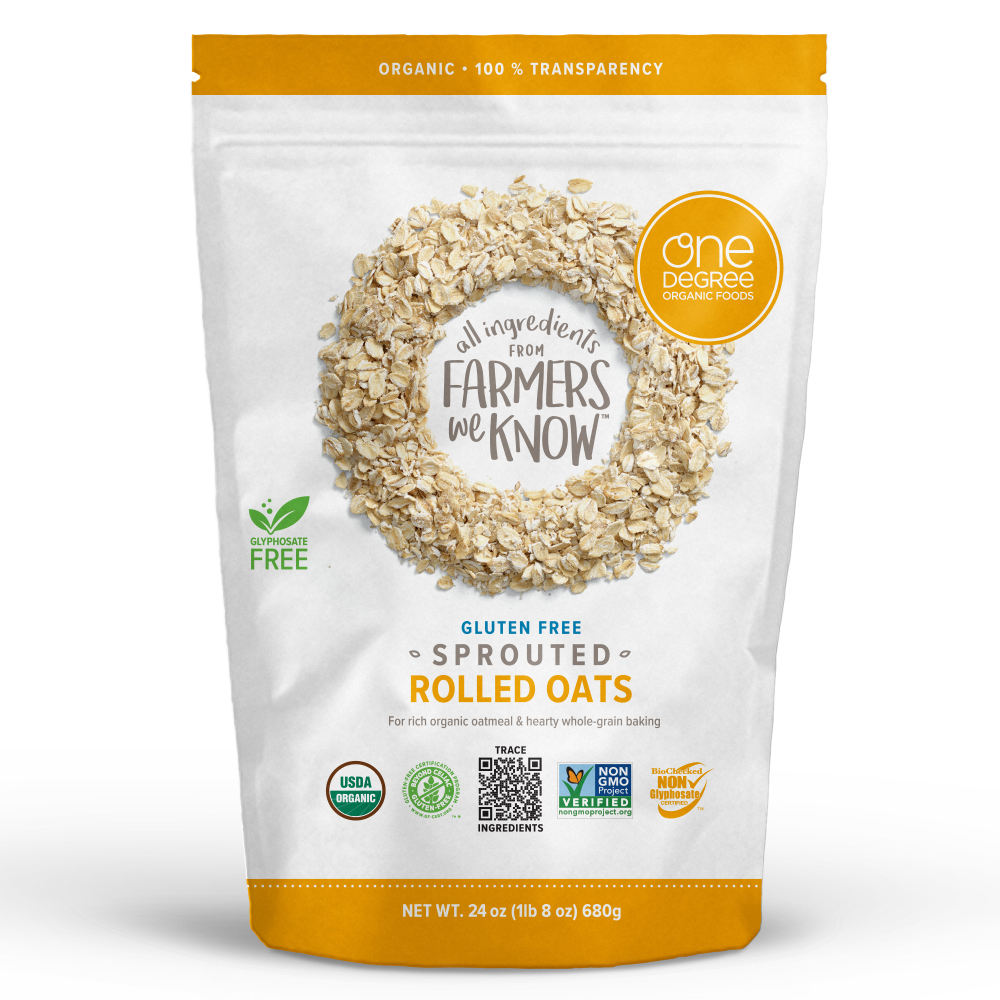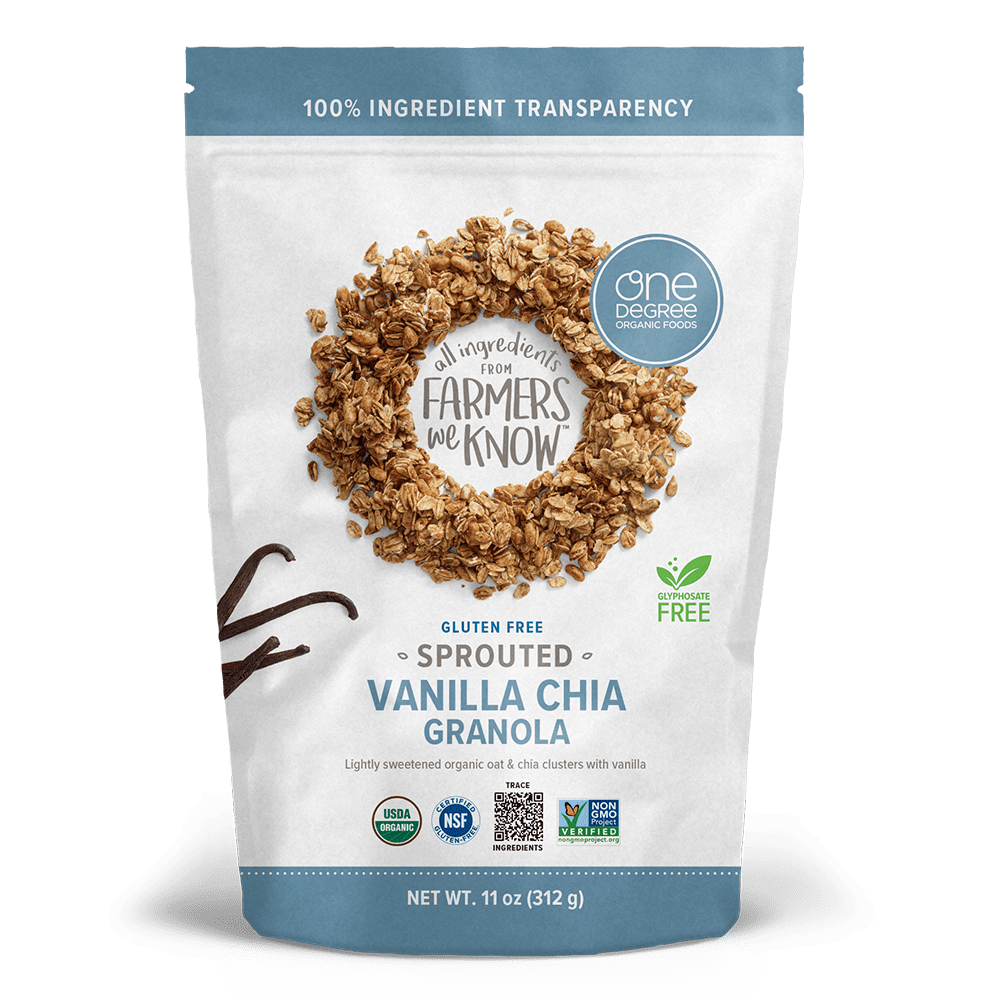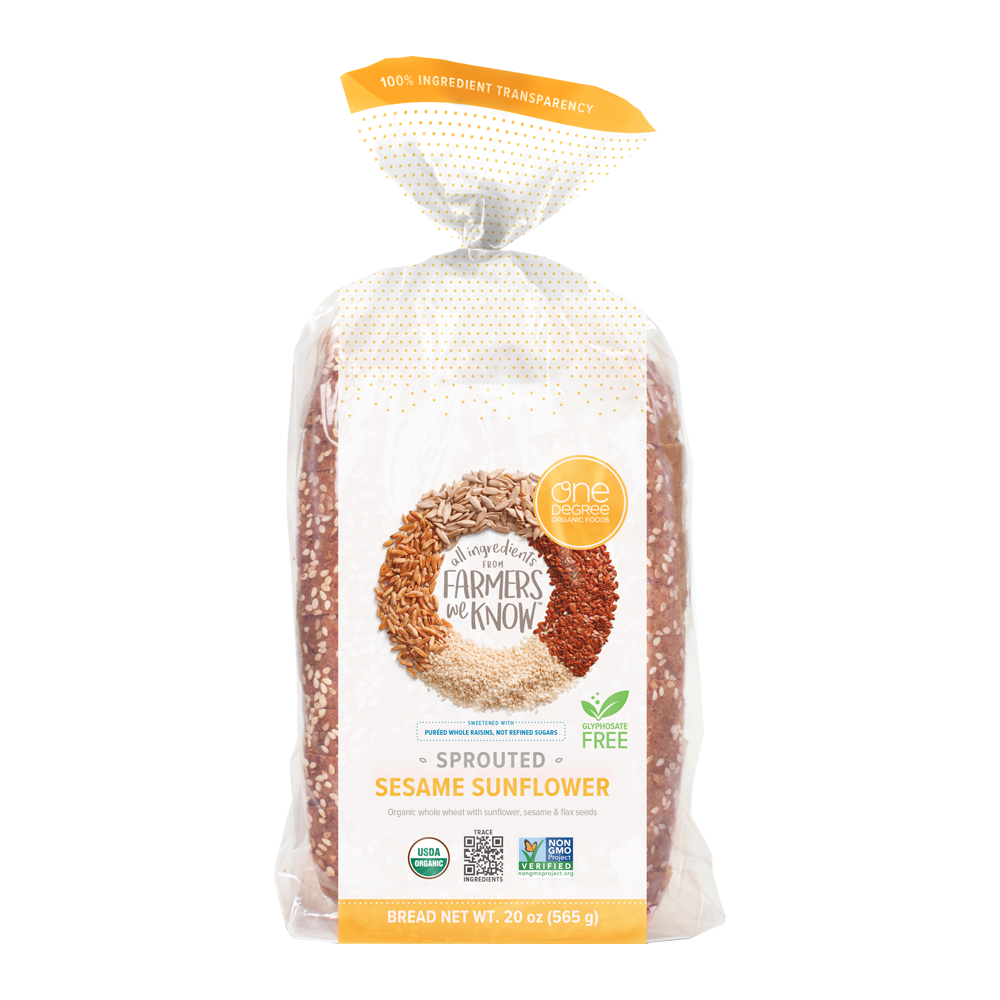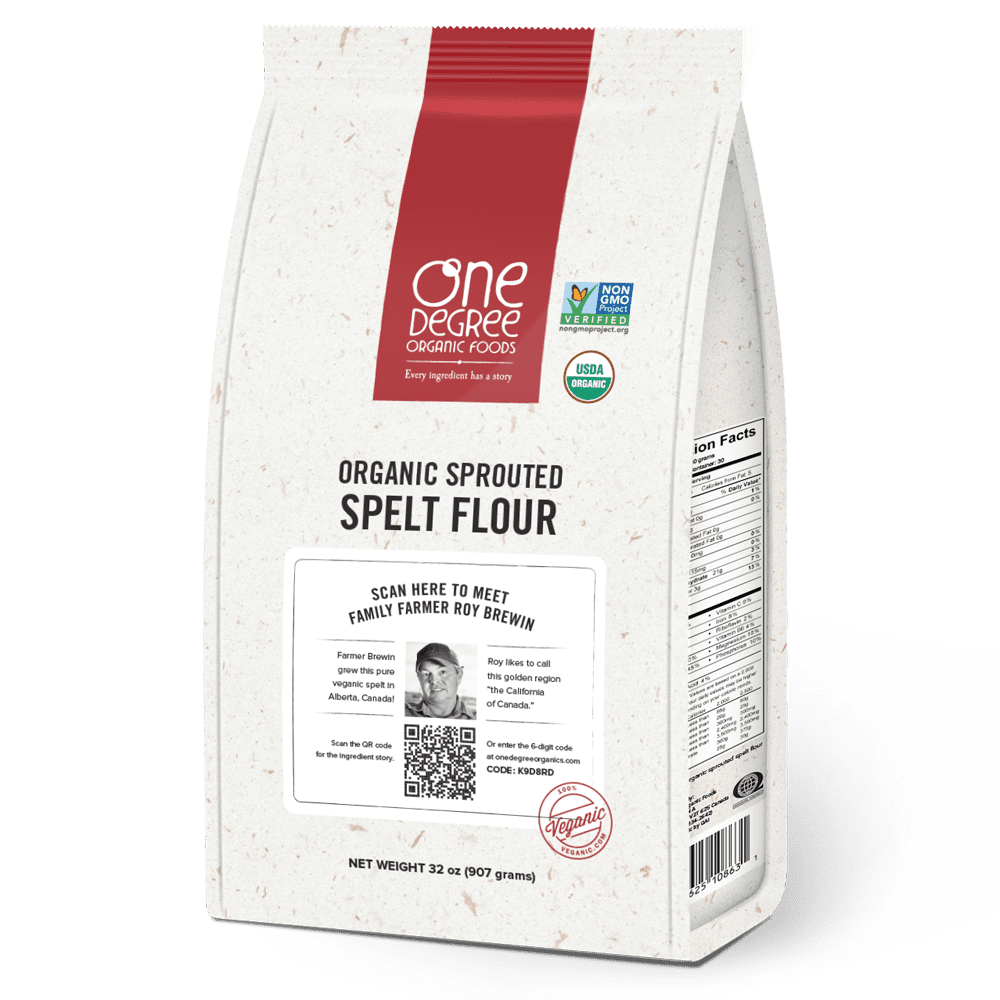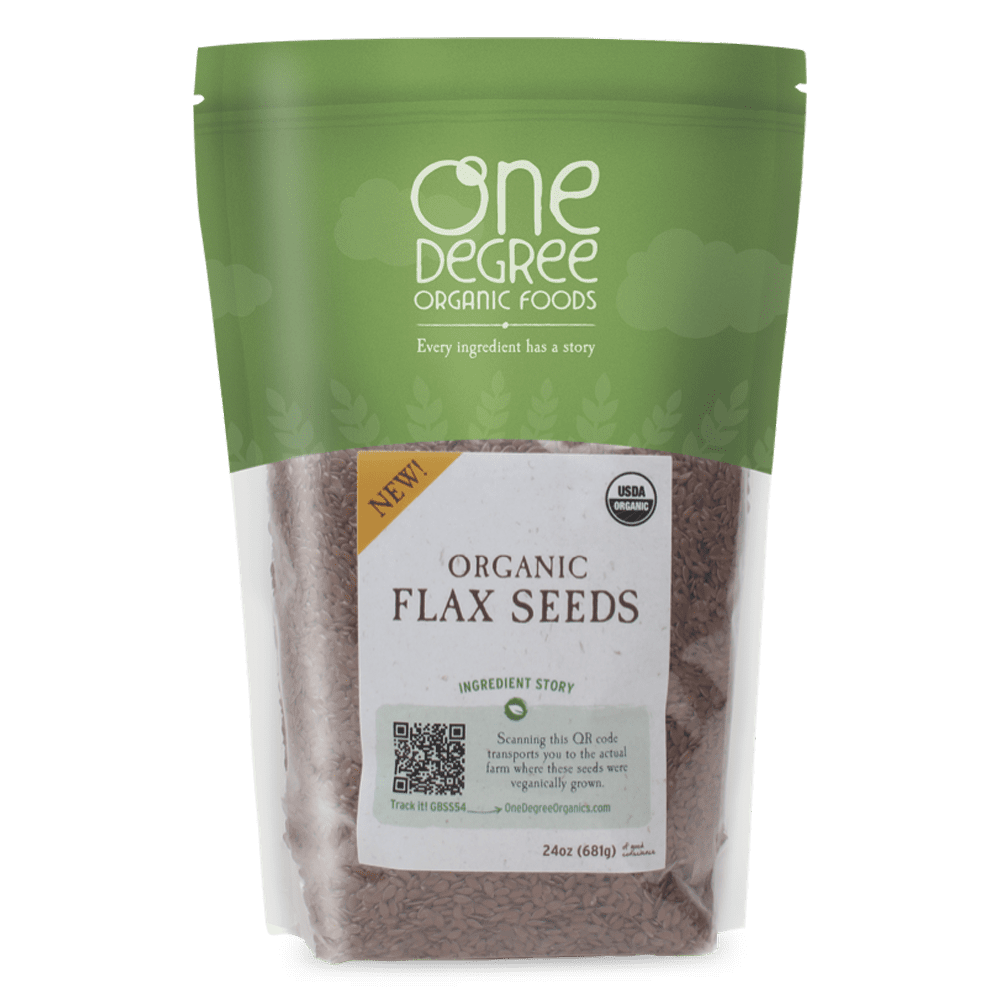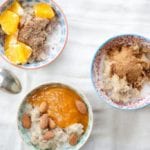Kathy’s Mix-and-Match Sprouted Whole Grain Breakfast Bowl
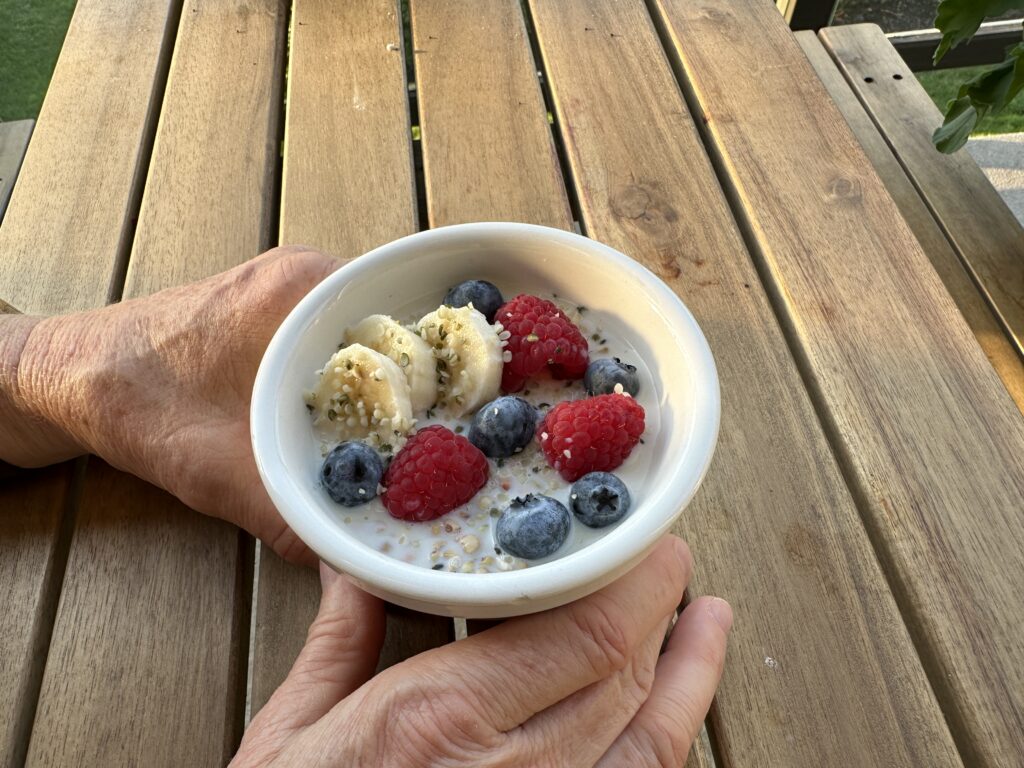
A quote I really like says, “The secret of your future is hidden in your daily routine” (Mike Murdock). Today is a perfect time to make sure whole grains are part of your routine—and my Mix-and-Match Sprouted Whole Grain Breakfast Bowl is a tasty place to start!
Rich in essential vitamins and minerals, fiber, and phytonutrients, whole grains have an incredible list of benefits. And there are many delicious and easy ways to add whole grains to your day!
You can cook whole grains in your slow cooker, Instant Pot, or a rice cooker. In our house, millet and steel cut oats are a favorite.
Another great way to consume whole grains? Sprouts! I love sprouted spelt or wheat berries—and not only on salad. I eat sprouted grains as my breakfast cereal! It may surprise you, but they really are delicious with chopped fruit, milk, granola, and whatever cereal toppings I have in the kitchen.
Use my simple Mix-and-Match Sprouted Whole Grain Breakfast Bowl recipe below for inspiration—but you can fill your bowl with whatever you like!
Start by sprouting a whole grain you like. Hearty grains like Kamut, spelt, wheat, triticale, or rye have a slightly sweet, almost nutty flavor, with a satisfying but tender chew. Smaller grains like millet and quinoa offer a more delicate bite. So, choose a go-to favorite. Or switch them up and have a one-of-a-kind bowl every morning. Either way, there are no wrong answers!
Sprouting whole grains is so easy to do—and most grains sprout within one or two days, so you can start a batch on the weekend and have plenty for breakfast bowls all week. Never sprouted whole grains before? Scroll down to find basic sprouting instructions after the Sprouted Whole Grain Breakfast Bowl recipe.
Ingredients
½ cup One Degree Organics Gluten-free Sprouted Granola (any flavor)
¼ to ½ cup sprouted whole grains
1 ½ cups of fresh fruit
2 Tbsp chopped nuts or seeds (ground flax, hemp hearts, chia or pumpkin seeds, walnuts or almonds are all tasty options!)
¼ cup non-dairy yogurt
Directions
If you have not sprouted your whole grain, follow the instructions below a few days before making this recipe. Otherwise, scoop a portion of sprouted whole grains into your bowl.
Wash and prepare fresh fruit as needed. Slice larger fruit (like apples, pears, peaches, bananas, citruses, or kiwis) into bite-sized pieces. Add to your breakfast bowl with sprouted grains.
Top sprouted grains and fruit with a scoop of your favorite plant-based yogurt, a couple tablespoons of chopped nuts or seeds, and a generous handful of your favorite One Degree granola. Enjoy!
Tips
Family breakfast? Set up a station and let everyone in your family make their own sprouted whole grain breakfast bowl. Because when kids have the power to pick their portion according to their appetite and top their breakfast just the way they like it, everyone wins.
Eat with the season and use what you have! This recipe is open-ended for a reason—there is no one right way to make this mix-and-match breakfast. So go ahead and use fresh-picked strawberries or tree-ripened peaches in summer, top your bowl with chopped apples or pears in the fall, or try frozen blueberries in winter. Use up the last shreds of coconut in the bag or finish off the flaxseeds or hemp seeds in your freezer. If it is a fruit you would eat on its own or an ingredient you would snack on while you bake, it will taste delicious as a breakfast bowl topping!
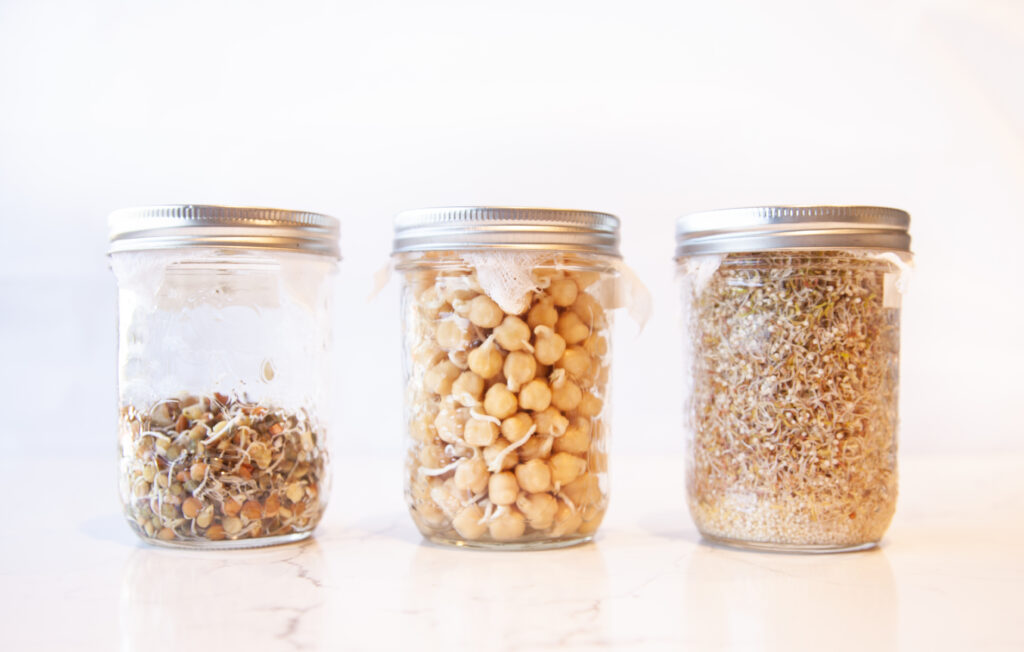
Basic Sprouting:
How to Sprout Whole Grains
Choose a whole grain.
(Kamut, spelt, wheat, triticale, rye, barley, brown rice, buckwheat groats (not kasha), millet, amaranth, and quinoa are all good options! As long as they are raw (not toasted or heated) and whole (not cracked or otherwise processed), most whole grains are good to sprout).
Soak ½ cup whole grains in cool water in a clean mason jar for 8 to 24 hours.*
(Some whole grains need to soak longer than others, while others only need to soak for 4 hours or less). Generally, the smaller the grain, the shorter the soak, but a quick internet search will give you any grain-specific soak time you seek).
Drain and rinse.
Cover the jar with a mesh sprouting lid or a square of cheesecloth secured with a rubber band. Set the jar on its side on a plate so water can drain.
Rinse your sprouting grains 2 or 3 times a day.
Your grains are ready when they have a short tail.
(Most grains sprout within 1 or 2 days. Smaller grains like millet and quinoa sprout within 12 hours, and larger grains can take 3 or 4 days. The temperature in your kitchen can speed up or slow the time, so check your grains at each rinse to see if they are ready!).
Store in the fridge for up to 5 days and enjoy with breakfast, lunch or dinner!**
Happy sprouting!
Satisfy your curiosity about sprouted whole grains. Read our comprehensive article, Sprouted Grains: The Benefits of Sprouting—Everything You Need to Know to learn why sprouting brings out the best in healthy whole grains.
Love this easy whole grain breakfast idea? Scroll down to sign up for One Degree Organics email to get plant-based recipes, inspiration, and more in your inbox. And follow us on Instagram, Pinterest, and Facebook to add organic goodness to your favorite social feed.
Important Notes on Sprouting:
*Sprouts multiply in volume more than you might expect.
Although it depends on the type you are sprouting, ½ cup of dry grain can yield 1 to 2 cups of sprouted grain. Resist the urge to sprout more than ½ cup of dry grain at a time until you know how much you and your family can eat in 3 – 5 days. (It is better to sprout less grain more frequently and enjoy fresh sprouts than be overwhelmed by more than you can use!)
**Fresh sprouts can have some risk of foodborne illness.
If you have a weakened immune system, are immunocompromised, pregnant, elderly, or a young child, it is best to avoid eating fresh sprouts.
Featured Products
-
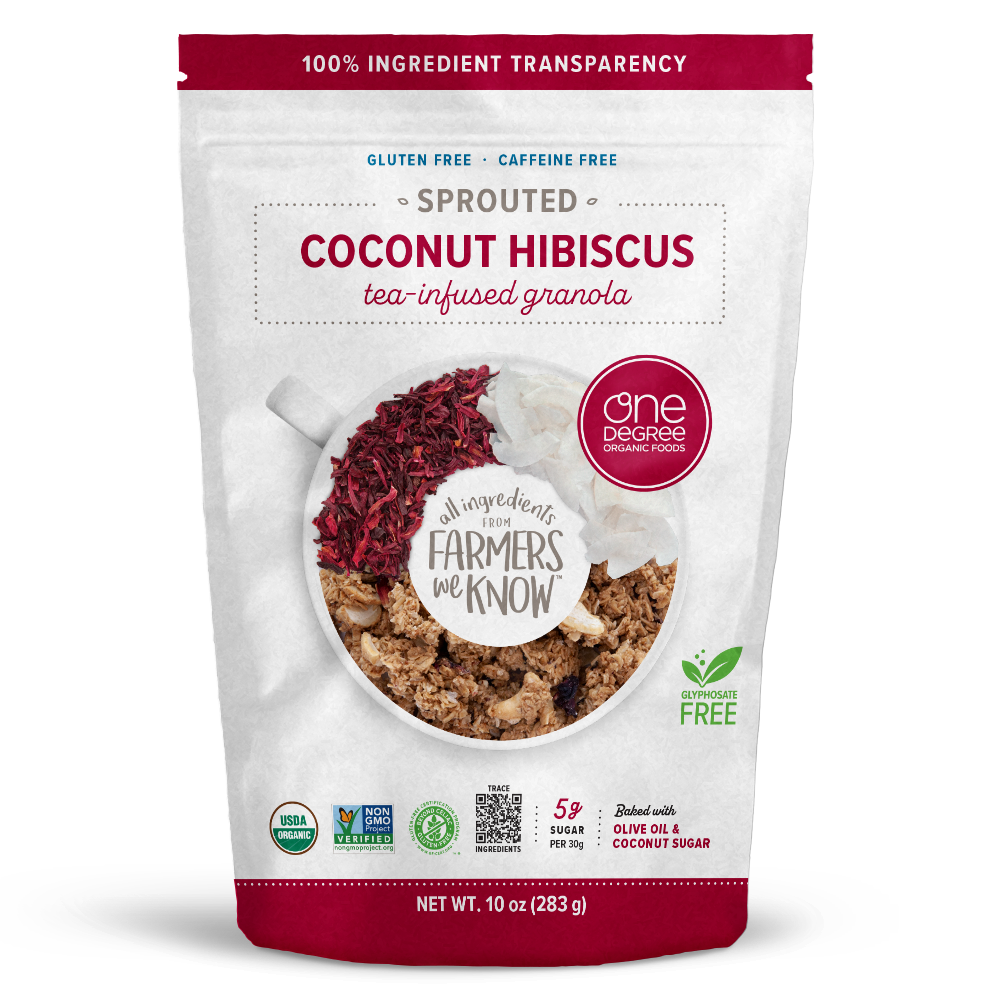
Coconut Hibiscus Tea Infused Granola
See Product -
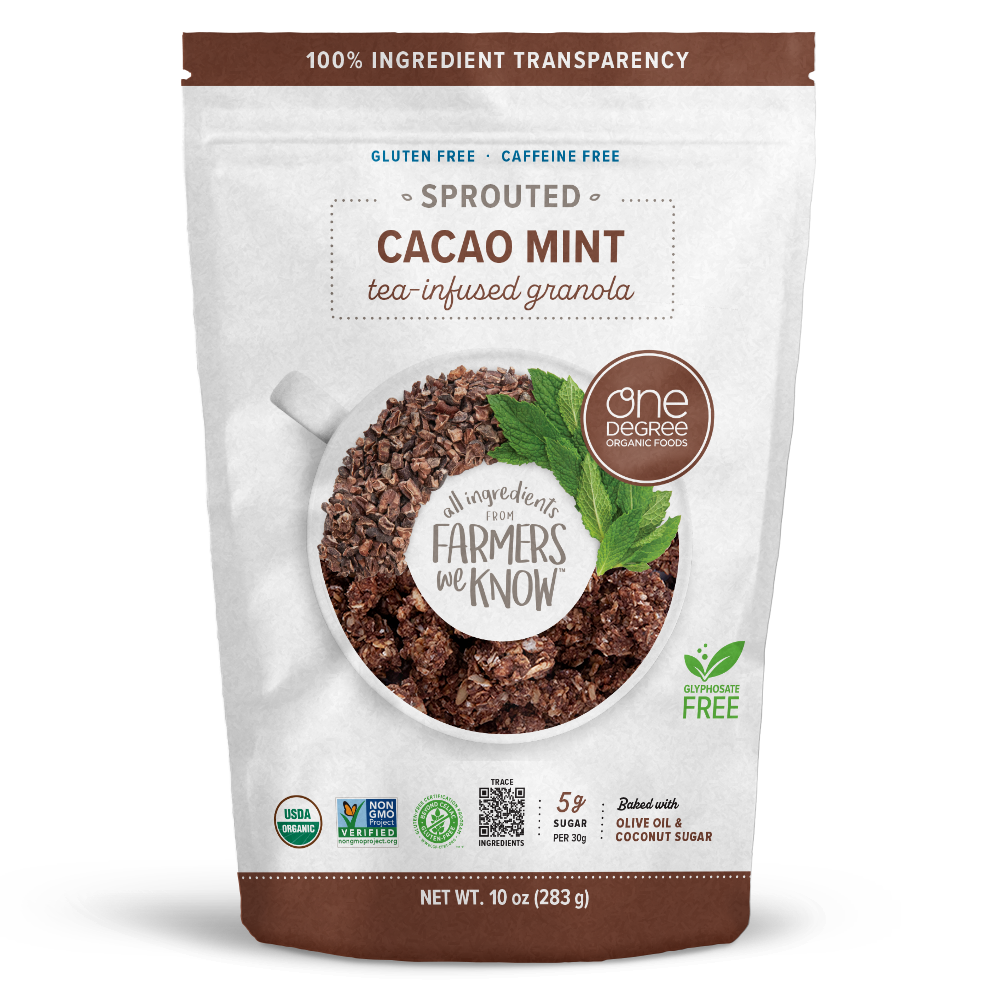
Cacao Mint Tea Infused Granola
See Product -
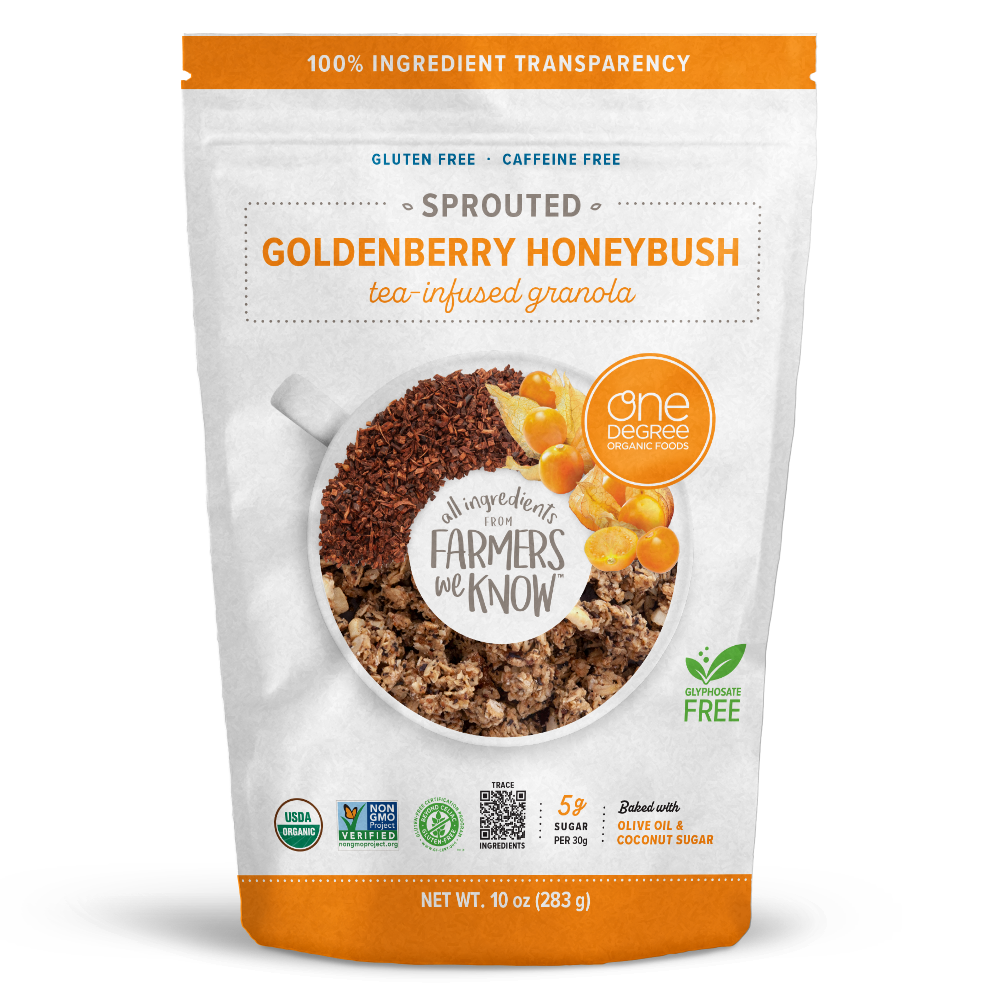
Goldenberry Honeybush Tea Infused Granola
See Product -

Honey Bergamot Tea Infused Granola
See Product -
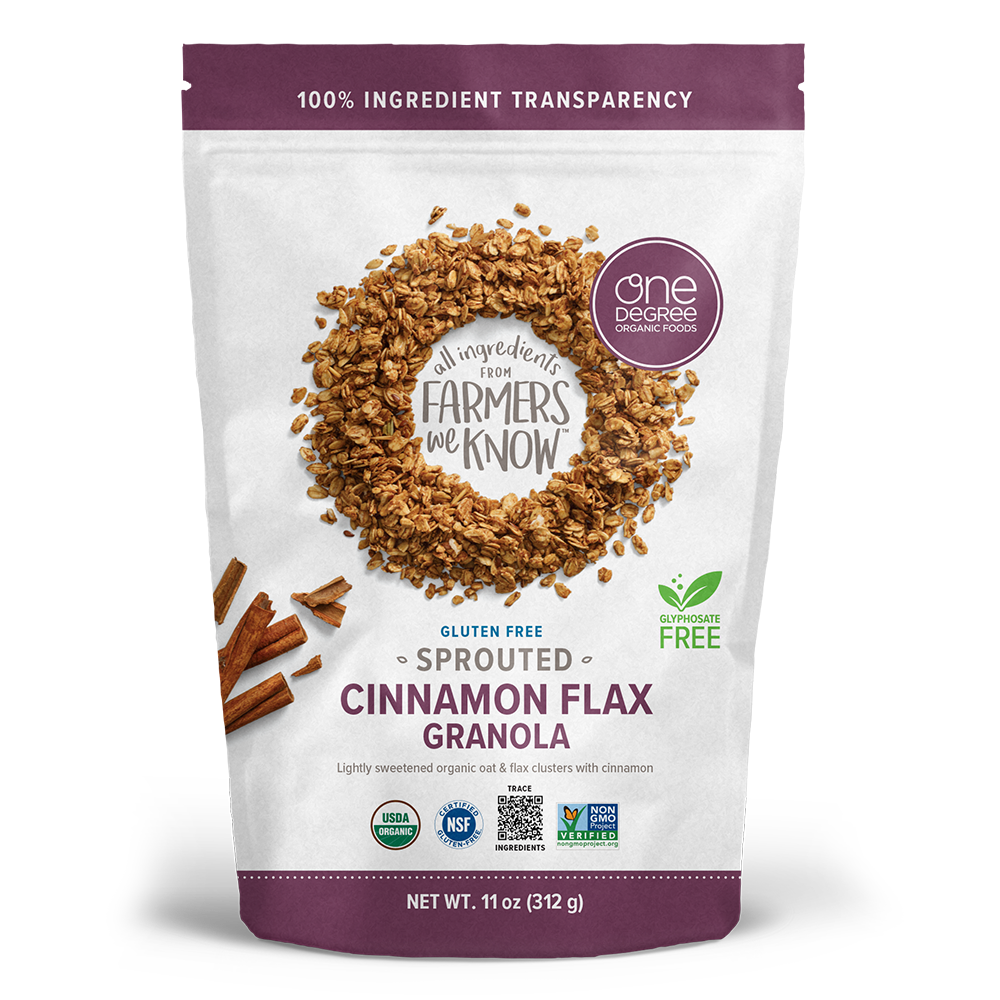
Sprouted Oat Cinnamon Flax Granola
See Product -
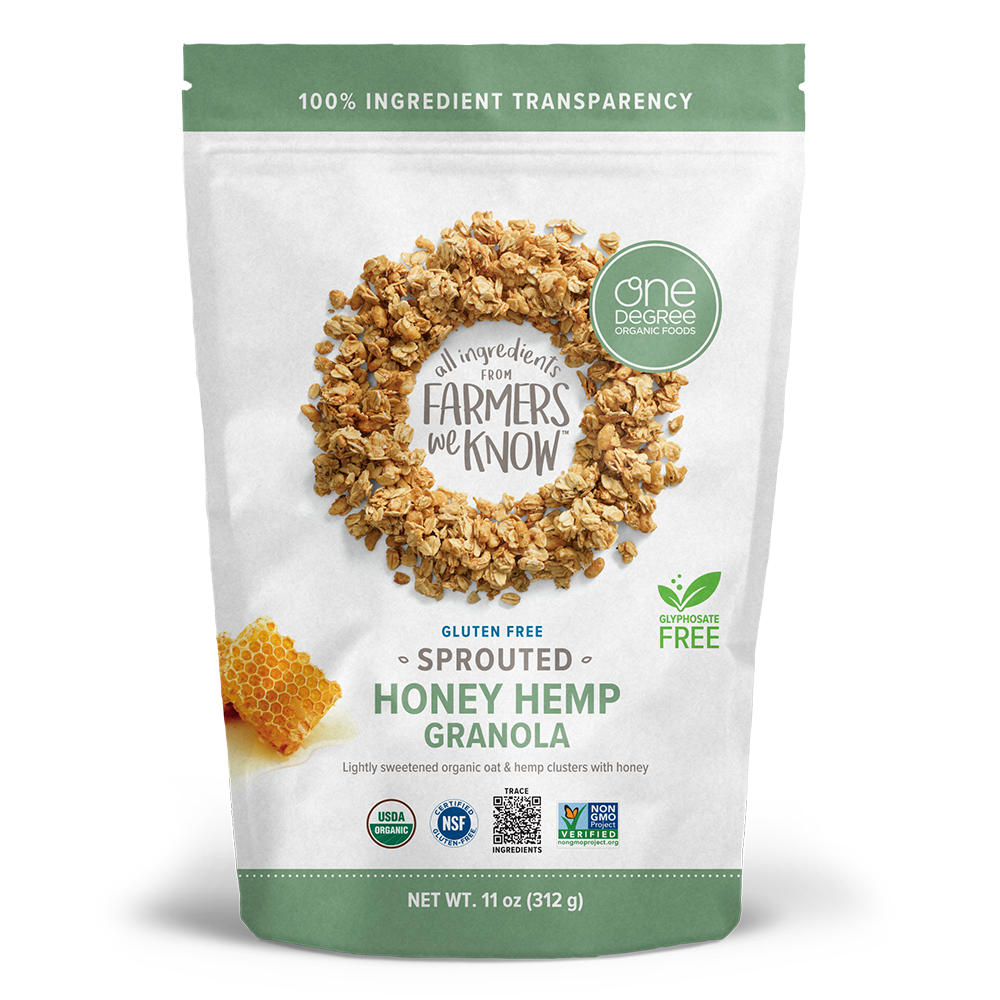
Sprouted Oat Honey Hemp Granola
See Product -
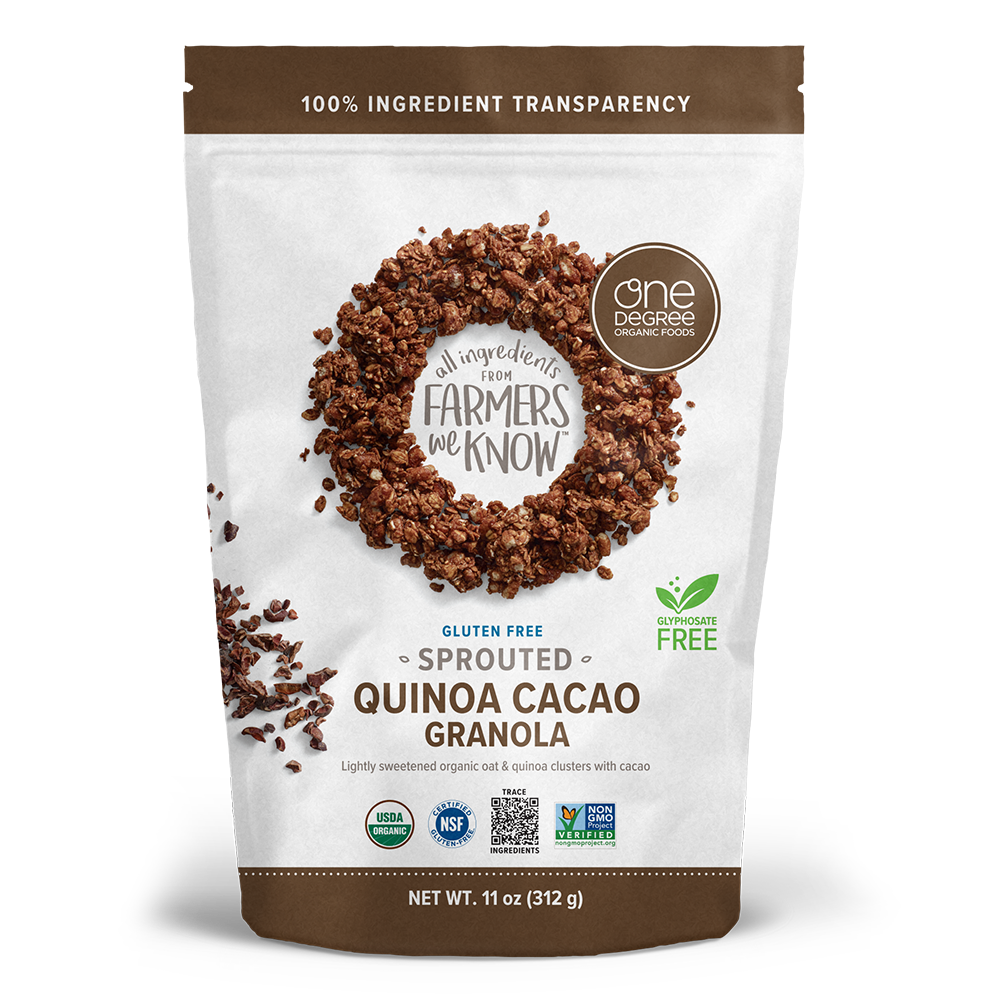
Sprouted Oat Quinoa Cacao Granola
See Product -
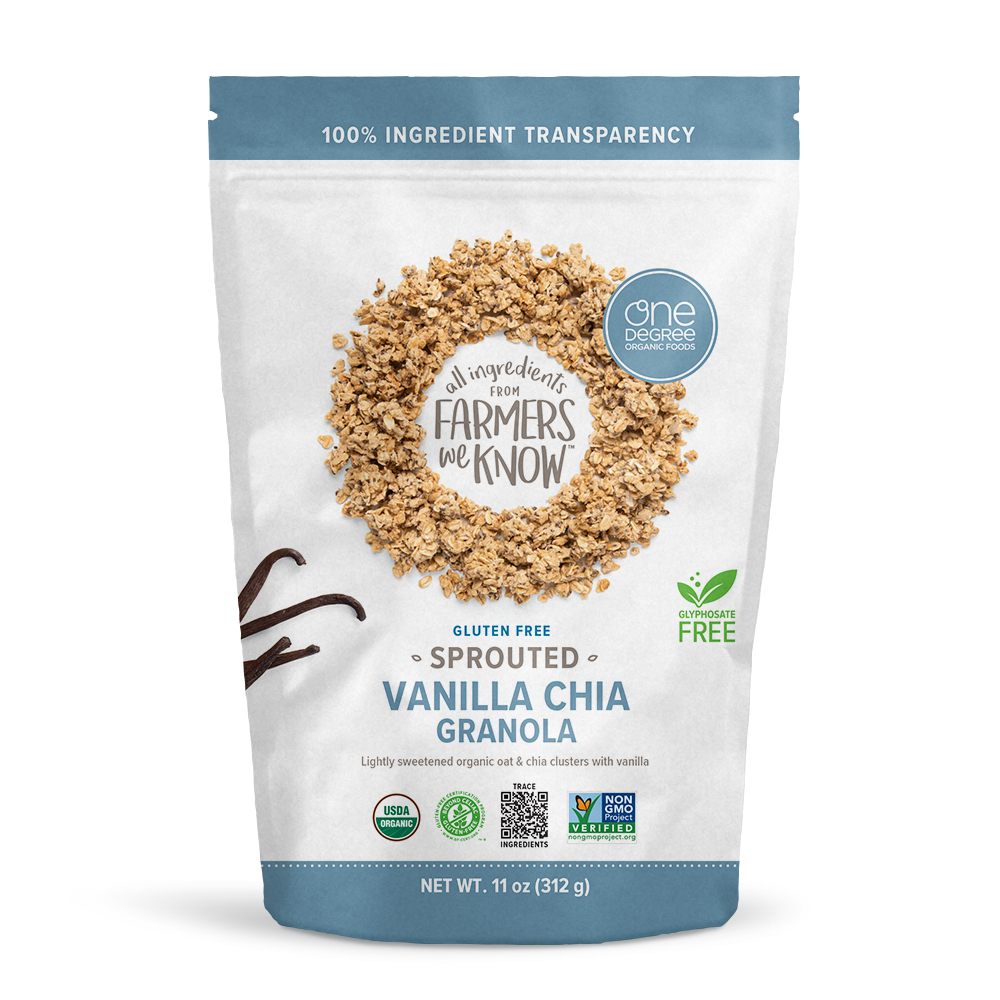
Sprouted Oat Vanilla Chia Granola
See Product
